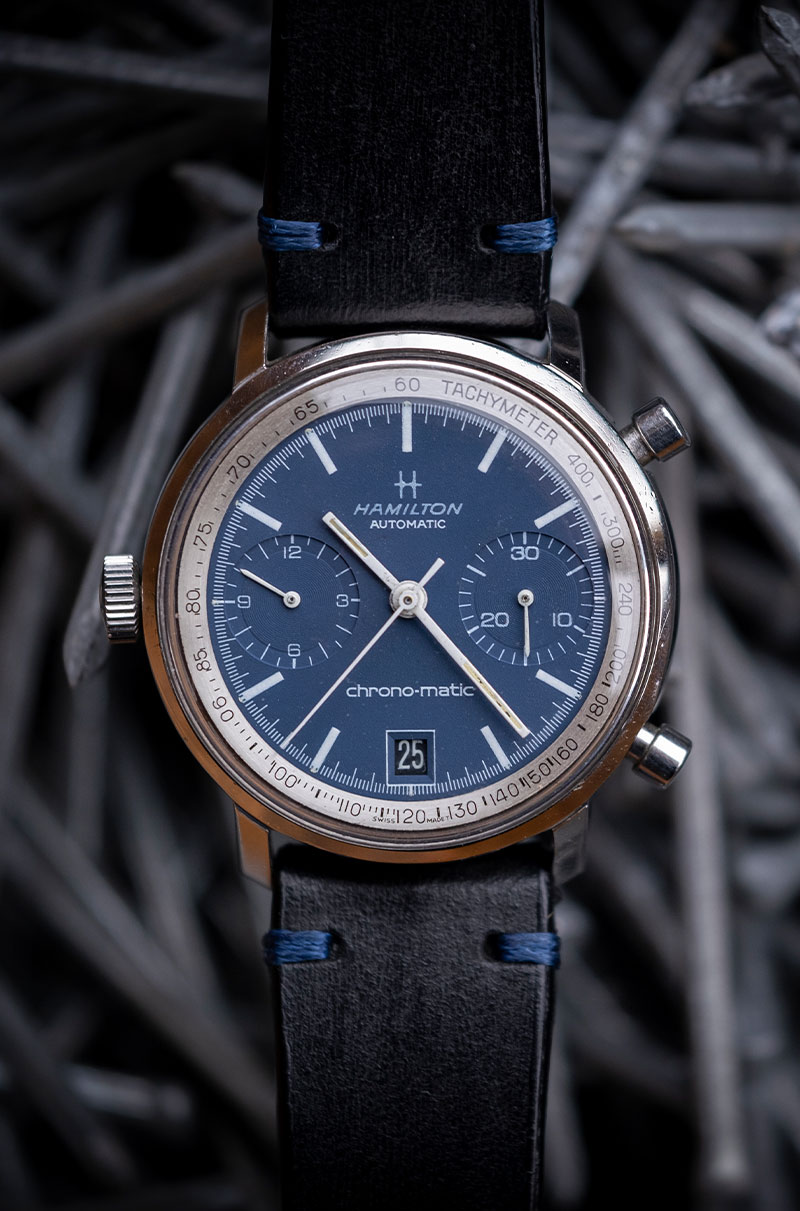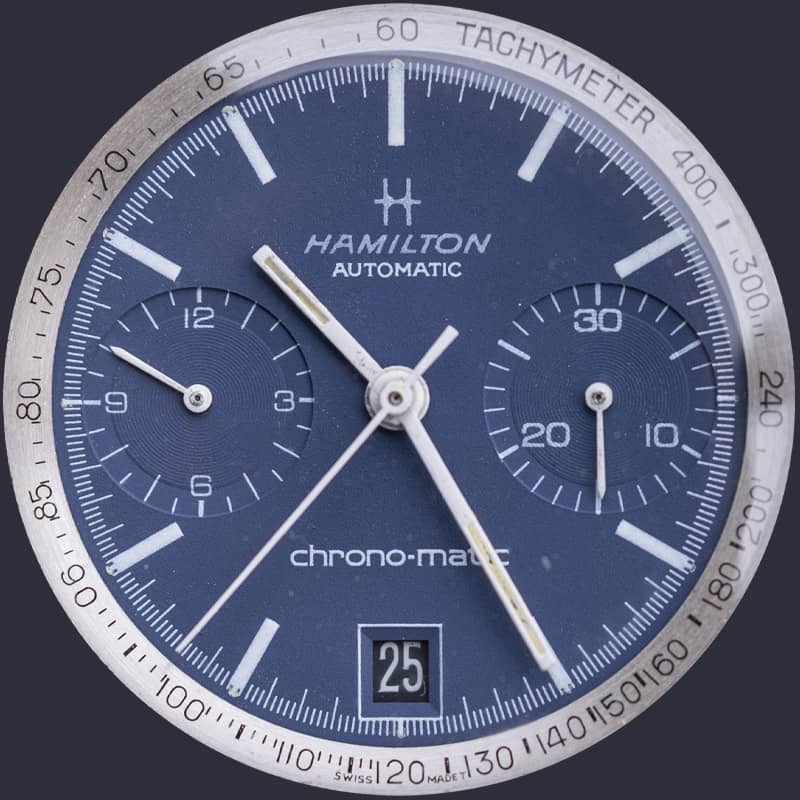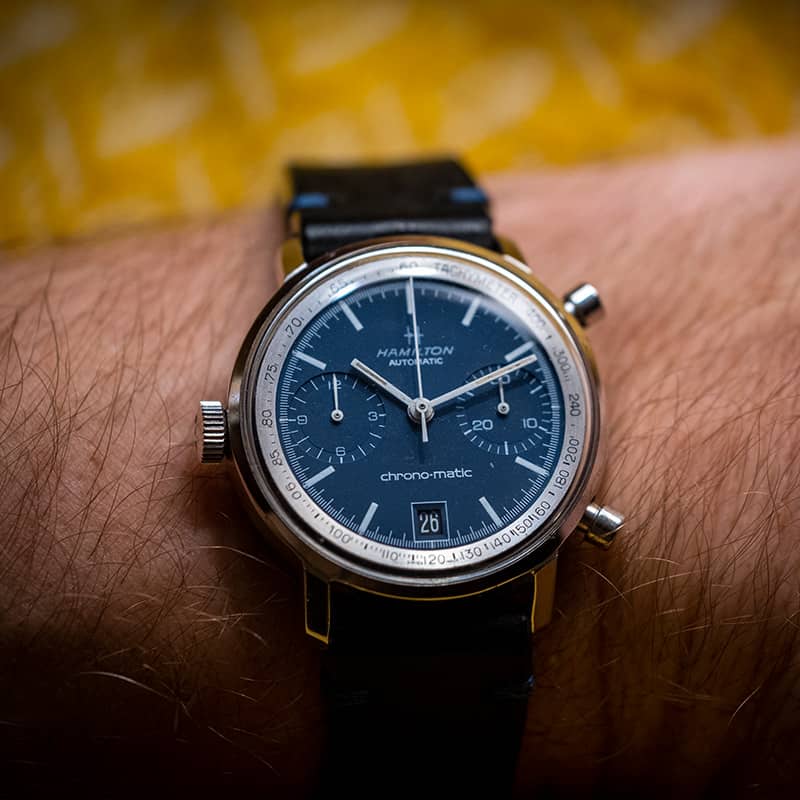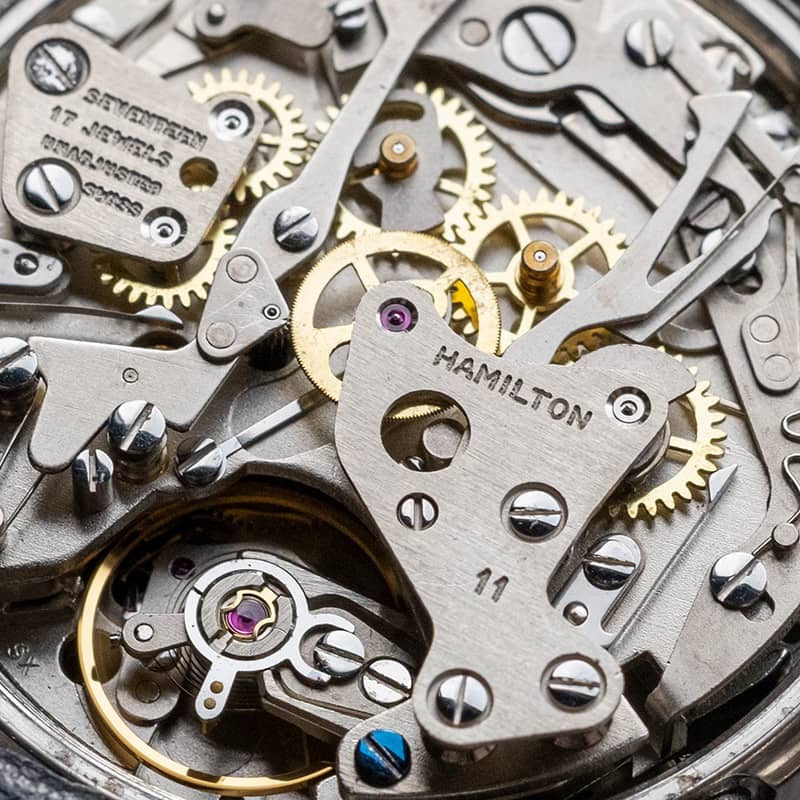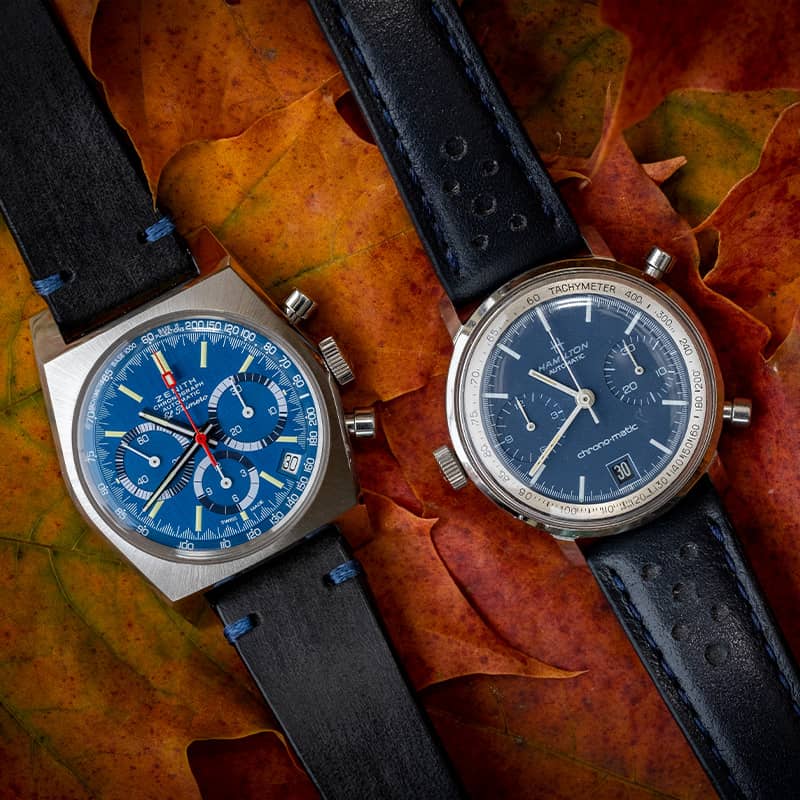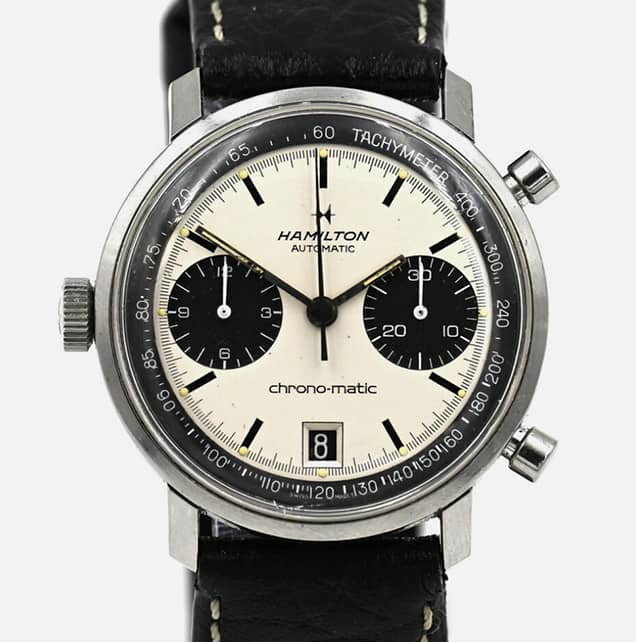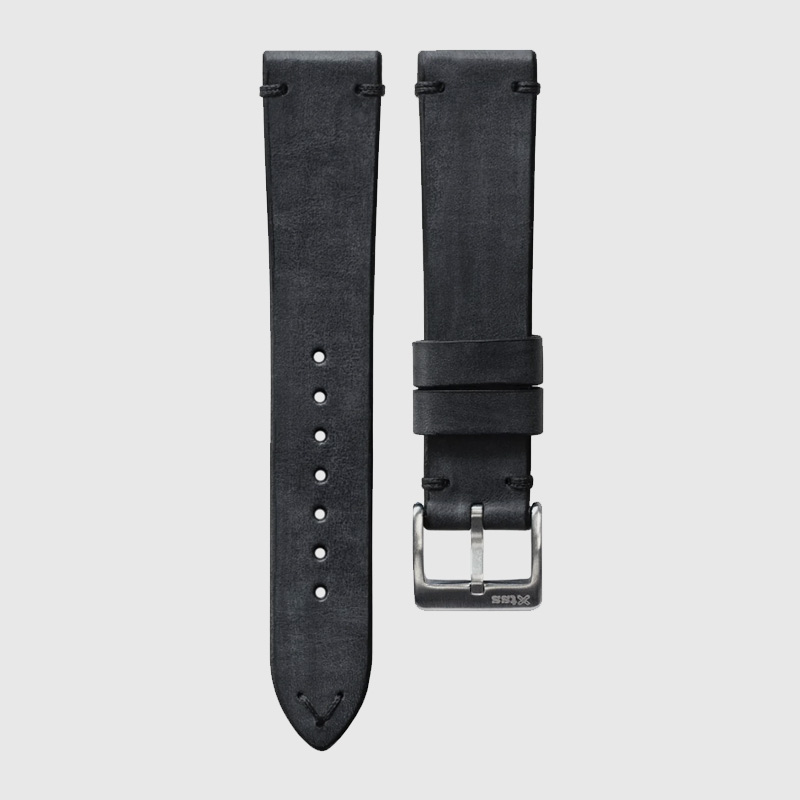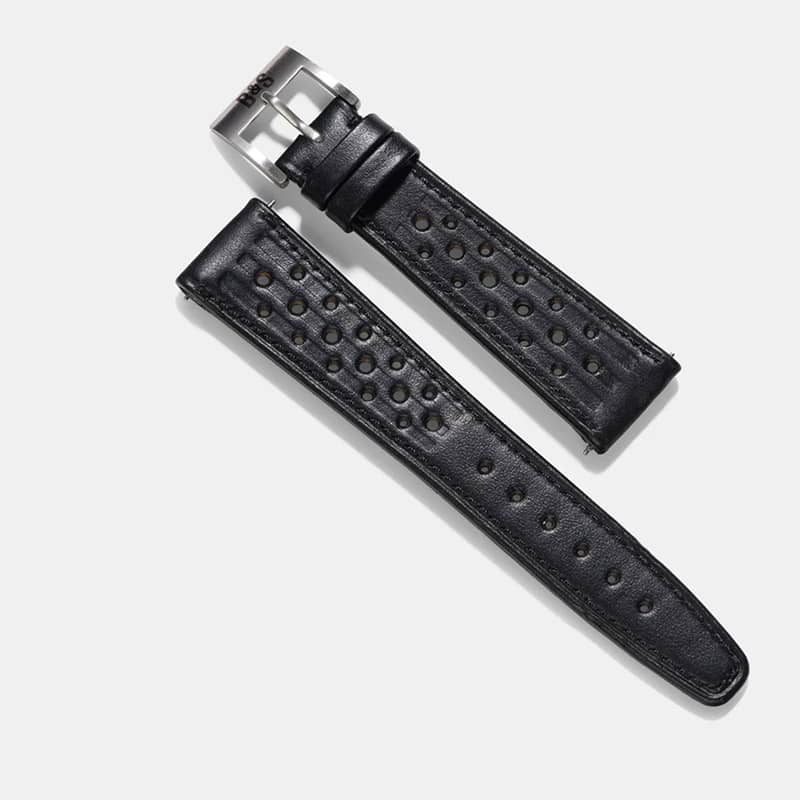Quick facts
Brand: Hamilton
Model: Chrono-Matic
Reference: 11002-3
Year: 1969
Case: Stainless steel, 37mm
Caliber: Heuer 11, automatic
What about it
In the late 1960s Zenith, Seiko, Heuer with Hamilton and Breitling competed to create the first ever automatic chronograph. Who won that race?
In the late 1960s a number of companies competed to create the first ever automatic chronograph. While Zenith notably revealed its A386 prototype movement in January 1969, Heuer, Hamilton, and Breitling collaborated on the Caliber 11 automatic chronograph, unveiled to the public on March 3rd, 1969. By that same summer, all three brands had watches powered by this movement on the market, preceding the availability of Zenith's first automatic chronographs in the fall. Additionally, Seiko's 6139 series showcased automatic chronographs dating as far back as March '69.
This Chrono-Matic 11002 came in two distinct versions. This particular variant boasts a stunning matte blue dial accented by a silver tachymeter ring and an unusual black date wheel positioned at 6 o'clock. Another captivating option was the panda version, featuring a white dial and black subdials, showcasing a more harmoniously integrated date wheel. With a typical 19mm lug width, the case takes on a balanced form. The right side of the case features elegantly simple pump pushers, while a robust "H"-signed winding crown graces the left. This unconventional positioning of the crown was a hallmark of the Calibre 11 series, designed with the assurance that daily adjustment was unnecessary—an intriguing detail highlighted in vintage ads. Topping off the ensemble is a beautifully domed crystal that crowns the case with sophistication.
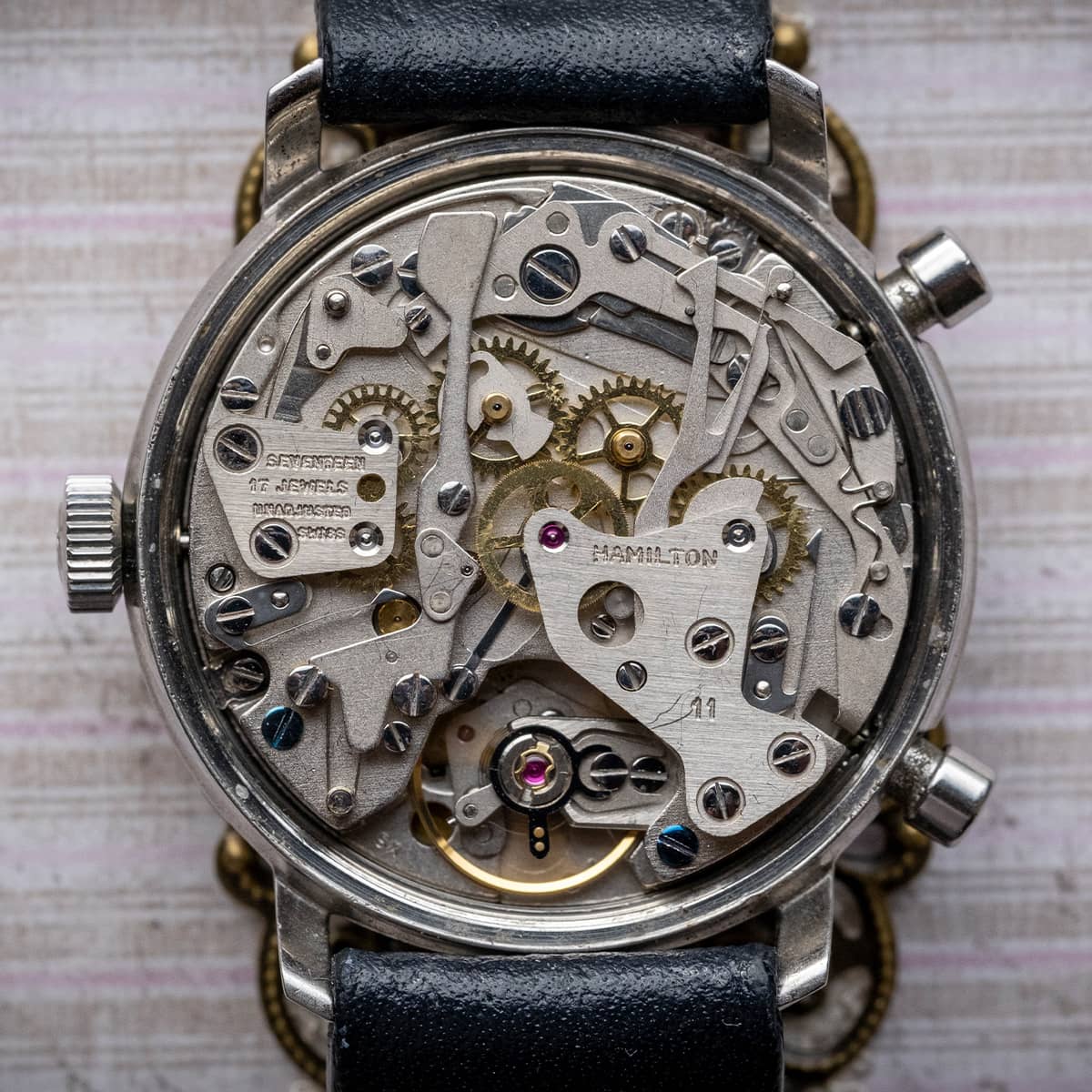
Caliber 11 movement
Through the culmination of four years' work and the combined efforts of four separate brands - Hamilton, Heuer, Breitling, and Dubois-Depraz - the caliber 11 was born. On March 3, 1969, the consortium debuted its line of Chrono-Matic watches at simultaneous press conferences in Geneva and New York City. You can read the whole story here.
For the spring of 1969, the caliber 11 found its way into numerous, and we mean a ton, of different cases under the Heuer and Breitling brands. For Hamilton, there were only three options: The funky Fontainebleau ref. 11001-3, the panda dial ref. 11002-3, and the blue dial ref. 11002-3. Where the Fontainebleau was a bit of a geometric marvel, the later two ref. 11002-3s dialed back the 1970s funk with more traditional round cases and classically angular lugs. There's some belief and scholarship that suggests these three chronographs were actually produced by Heuer for Hamilton as a continuation of the consortium partnership.
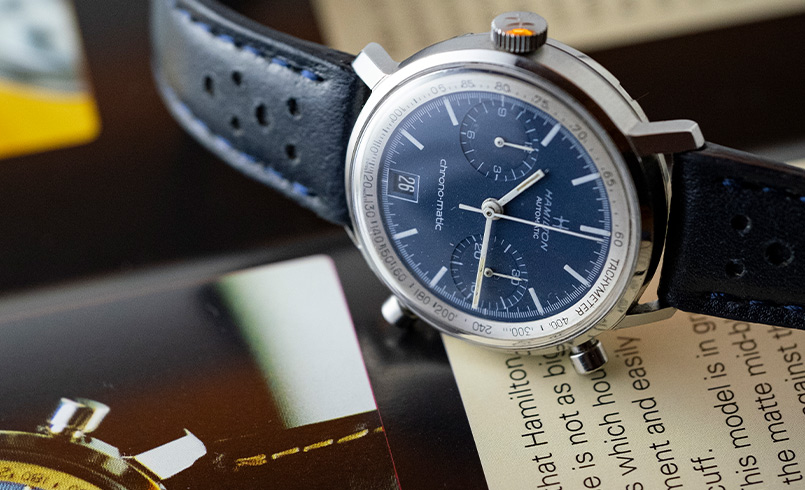
What a dial!
The Hamilton Chrono-Matic embodies a sublime dial and design. Its distinctive blue hue sets it apart from many chronographs of its era, harmonizing beautifully with the silver tachymeter ring. The hands, rendered in white, and the dial's printed elements, also in white, offer a striking contrast that enhances its allure. The overall aesthetic of the Chrono-Matic exudes a classic 1960s vibe, reminiscent of other Hamilton timepieces from that era, often resembling more affordable versions of Carreras. It wouldn't be surprising if this design was initially intended for a manual wind chronograph. Regarding the black date wheel, while it may seem an odd choice, it strangely integrates well with its deep, recessed placement, possibly indicative of Hamilton's cost-cutting measures at the time.
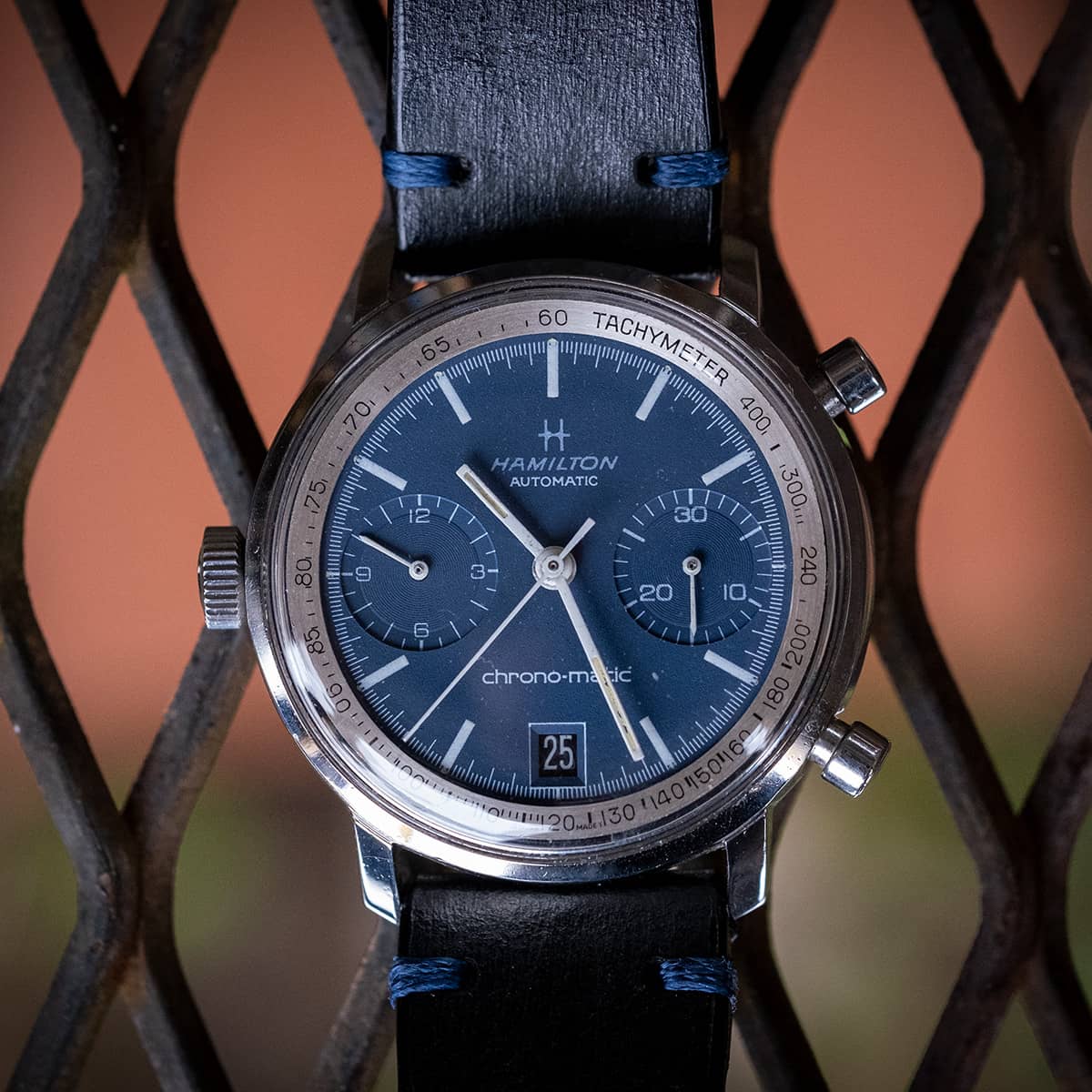
Variation
Market
Availability: very rare
A couple watches available
Pricing: 2,500 - 4,000 €
(Dec 2023)
References
Vew articles about this model. A lot about Heuer Caliber 11.
Straps
Some recommended strap options for this watch. External links to their webshops.
